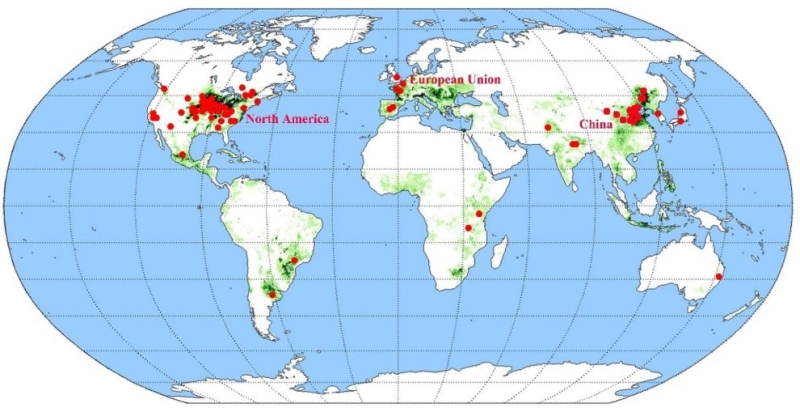Scientists Conduct Meta-analysis of Literature Investigating Fate and Use Efficiency of Nitrogen Fertilizer in Maize Cropping Systems
The application of nitrogen (N) fertilizer in farmland can significantly increase crop yields. But excessive application of N may decrease N use efficiency, increase N losses and cause environmental pollution. Quantifying the fate and use efficiency of N fertilizers is essential for N fertilizer management in farming systems. In order to achieve sustainable food production, researchers have developed different farming management regimes to increase crop yields and N use efficiency, and reduce environmental pollution caused by N losses. However, the fate and use efficiency of fertilizer N vary greatly across soil-climate regions and are also affected by farming management regimes. Understanding the global and regional differences in N use efficiency and the factors controlling them can help us better manage N fertilization, improve the use efficiency, and reduce the environmental pollution caused by N losses.
In view of this, researchers (Project Associate Researcher Quan Zhi and Prof. Fang Yunting, etc.) from the Stable Isotope Ecology Research Group of the Institute of Applied Ecology (IAE), Chinese Academy of Sciences, and Associate Professor Zhang Xin from the Environmental Science Center of the University of Maryland in the United States conducted a meta-analysis of literature investigating the fate of N fertilizer in maize production systems.
The researchers extracted a total of 366 observation data from 74 research papers that conducted field 15N tracer trials (Fig.1). They examined regional differences in the fate and use efficiency of fertilizer N under conventional cropping managements, and explored the impacts of various technologies and management practices.
The researchers found that, an average 41% of the fertilizer N applied to the maize systems is taken up by crops during the current season, 31% remains in the soil, and 28% is lost (into the water body and the atmosphere). The uptake of N by crops show significant regional differences, with significantly higher use efficiency in European and American countries (42-54%) than in China (33%) (Fig.2). The researchers indicated that the lower N use efficiency in China may be related to the lower soil organic matter content.
The researchers also found that deep application of N fertilizer and multiple applications of N fertilizer can significantly increase maize yield, N uptake and N use efficiency, and reduce N losses.
This research increases people's understanding of the fate of N fertilizer in natural and farming systems, and provides a solid scientific basis for improving N fertilizer management in cropping systems.
This study was funded by the National Key Research and Development Program of China, the National Natural Science Foundation of China and the Liaoning Revitalization Talents Program. The results have been published in the journal Earth’s Future, entitled "Fates and use efficiency of nitrogen fertilizer in maize cropping systems and their responses to technologies and management practices: A global analysis on field 15N tracer studies."

Fig.1 Global distribution sites of field 15N tracer experiments (n = 114) conducted in corn production systems (Image by QUAN Zhi).

Fig.2 Global and regional differences of the fate of nitrogen fertilizer in conventionally managed corn fields (field 15N tracer tests) (Image by QUAN Zhi).
Contact
YUE Qian
Institute of Applied Ecology, Chinese Academy of Sciences
Tel: 86-24-83970324
E-mail: yueqian@iae.ac.cn



